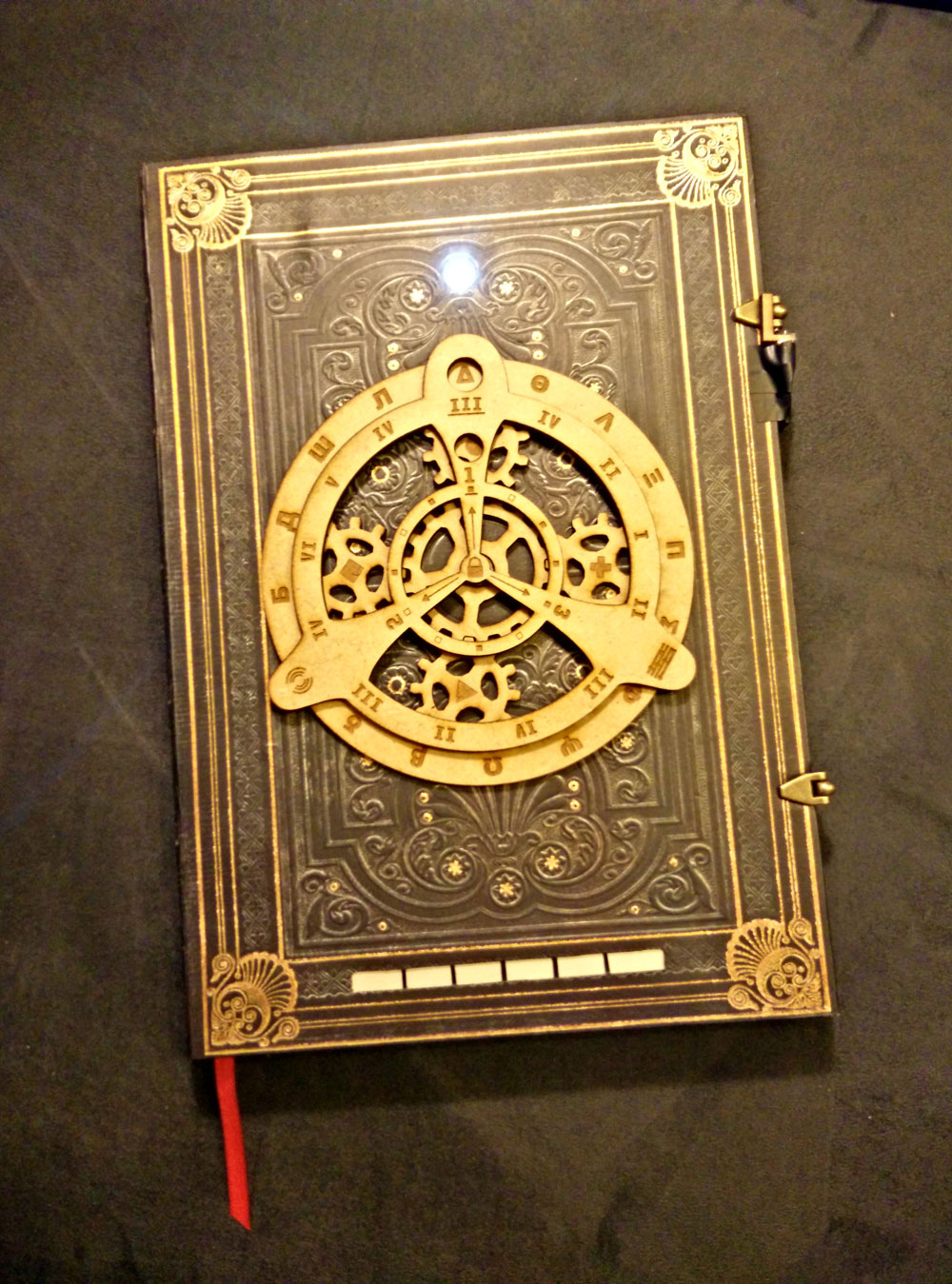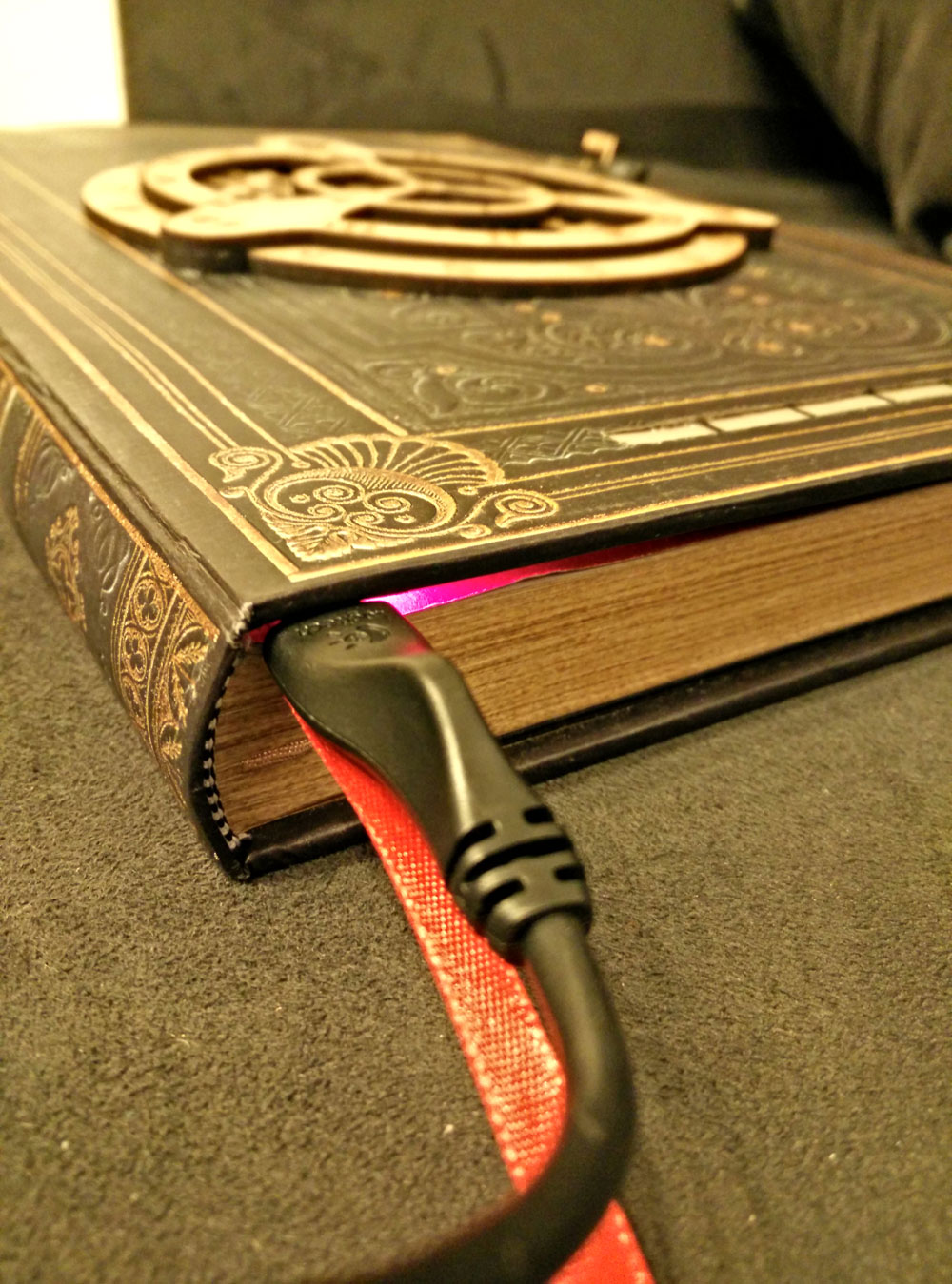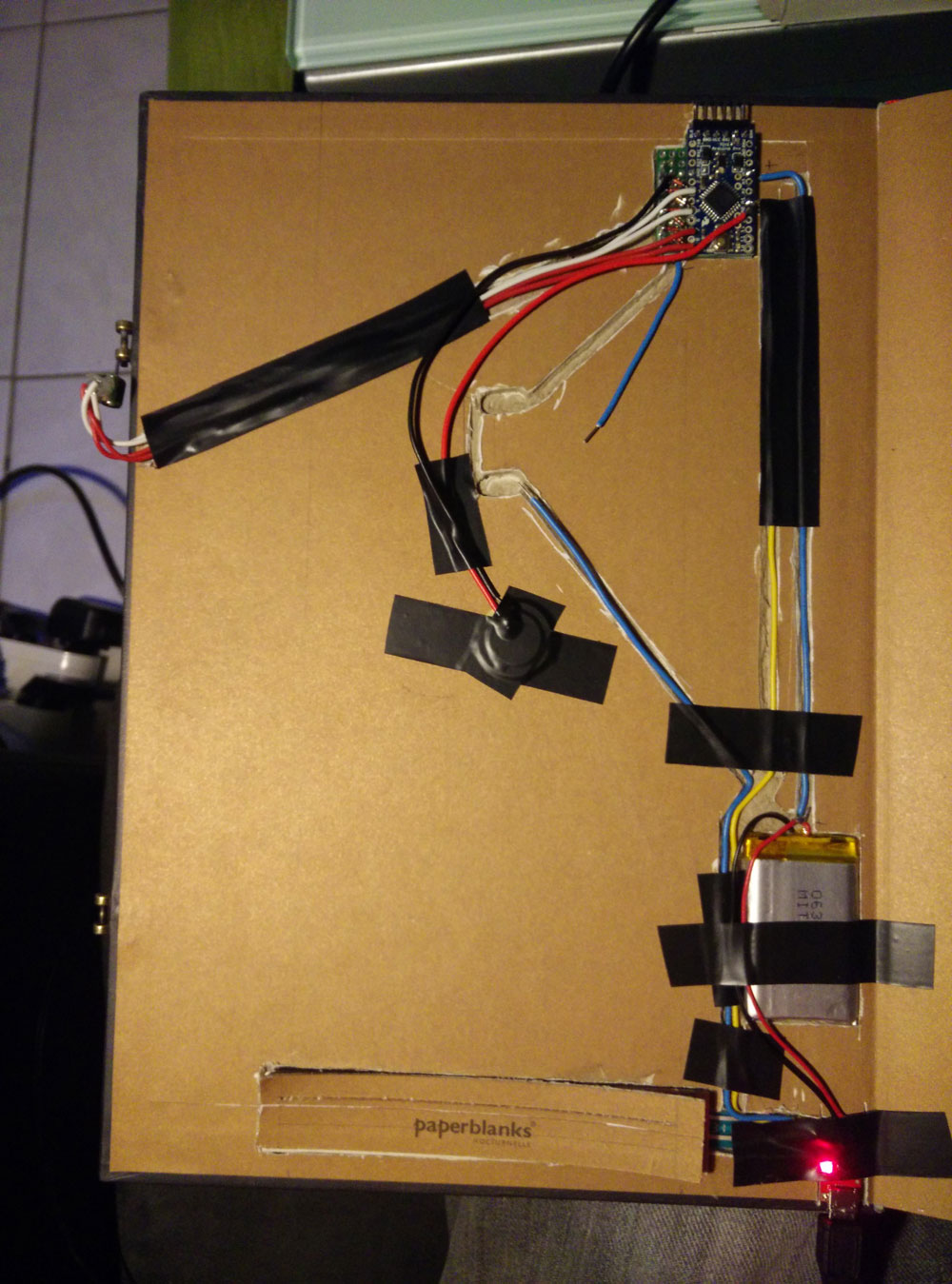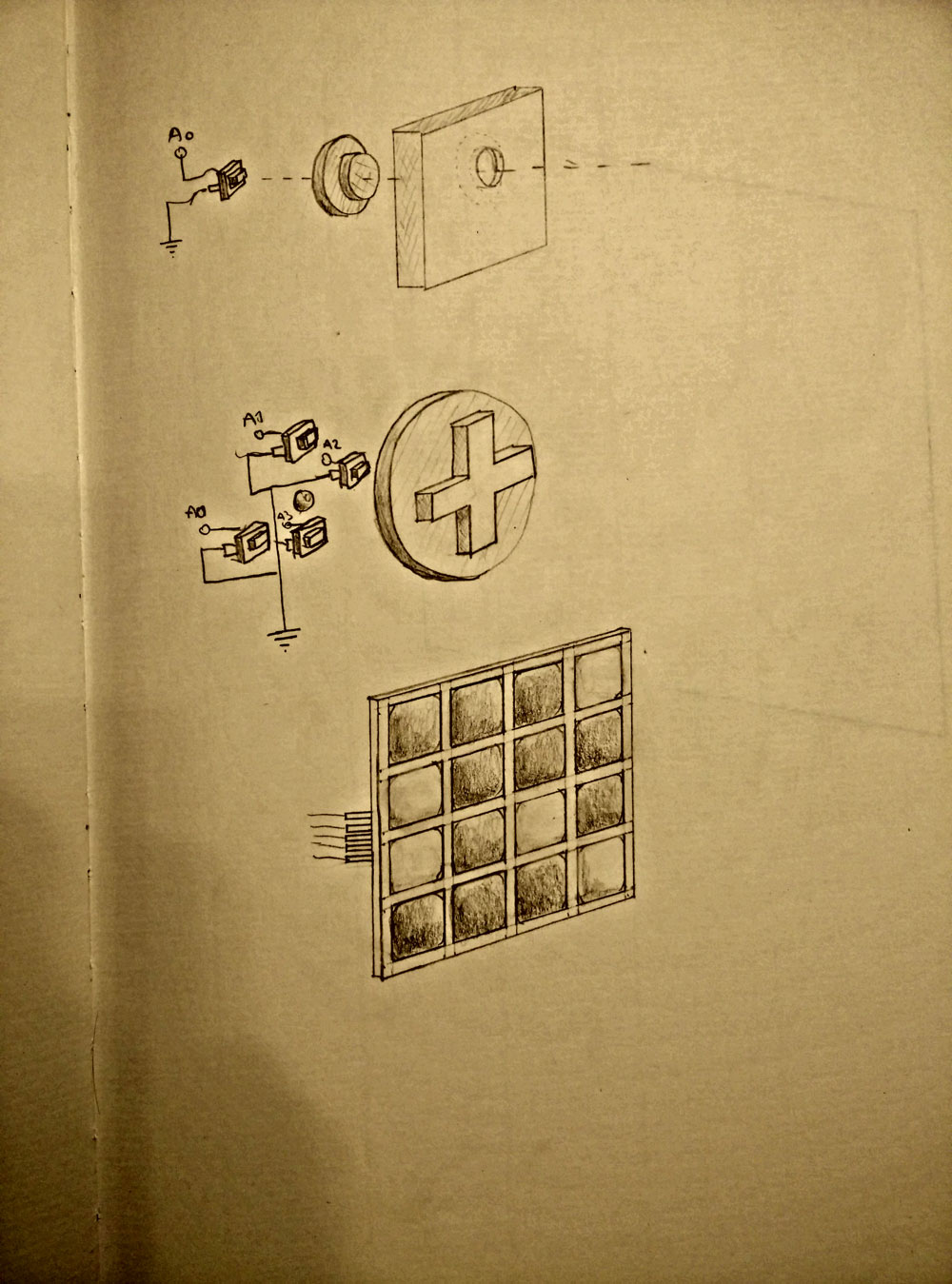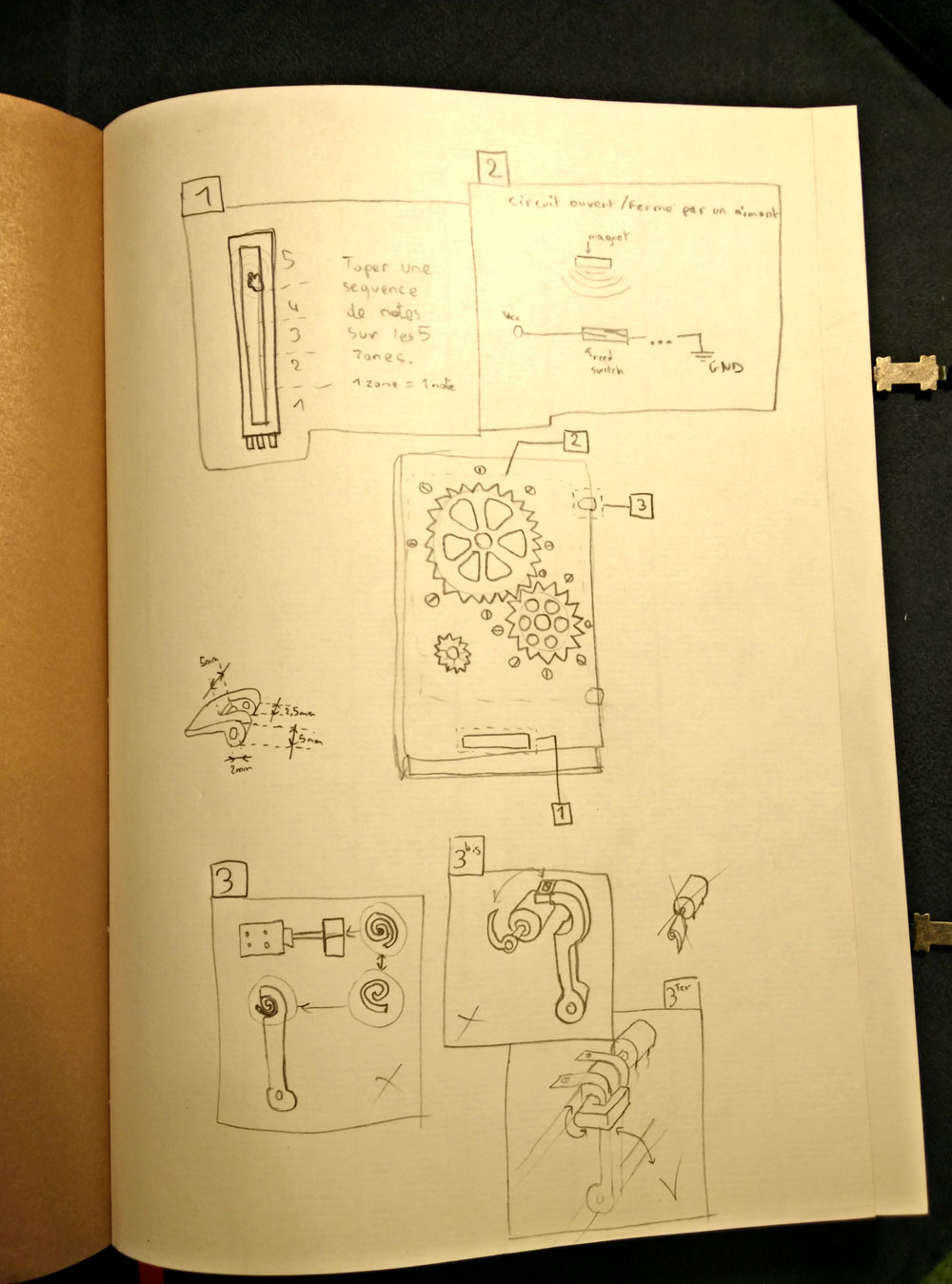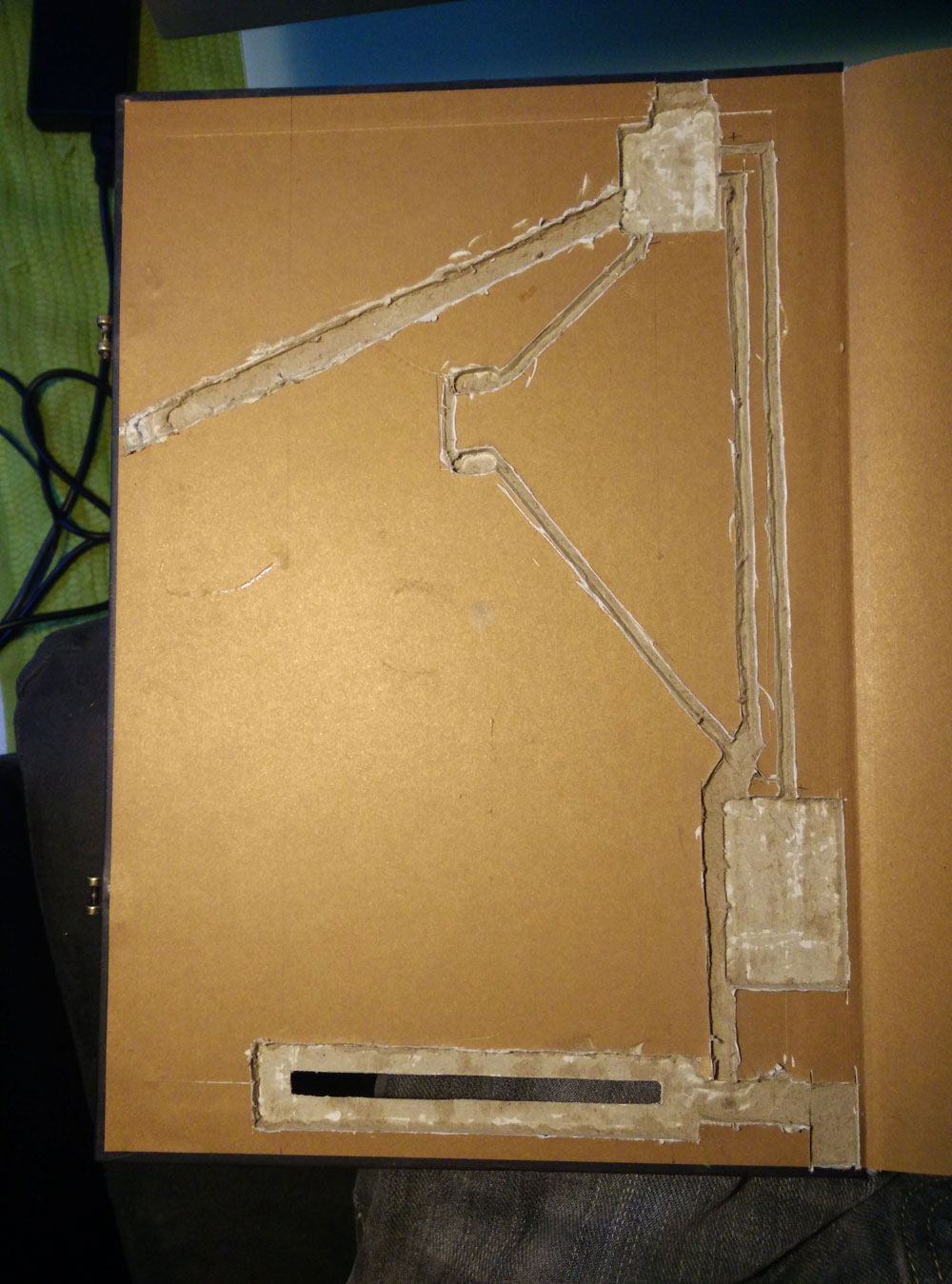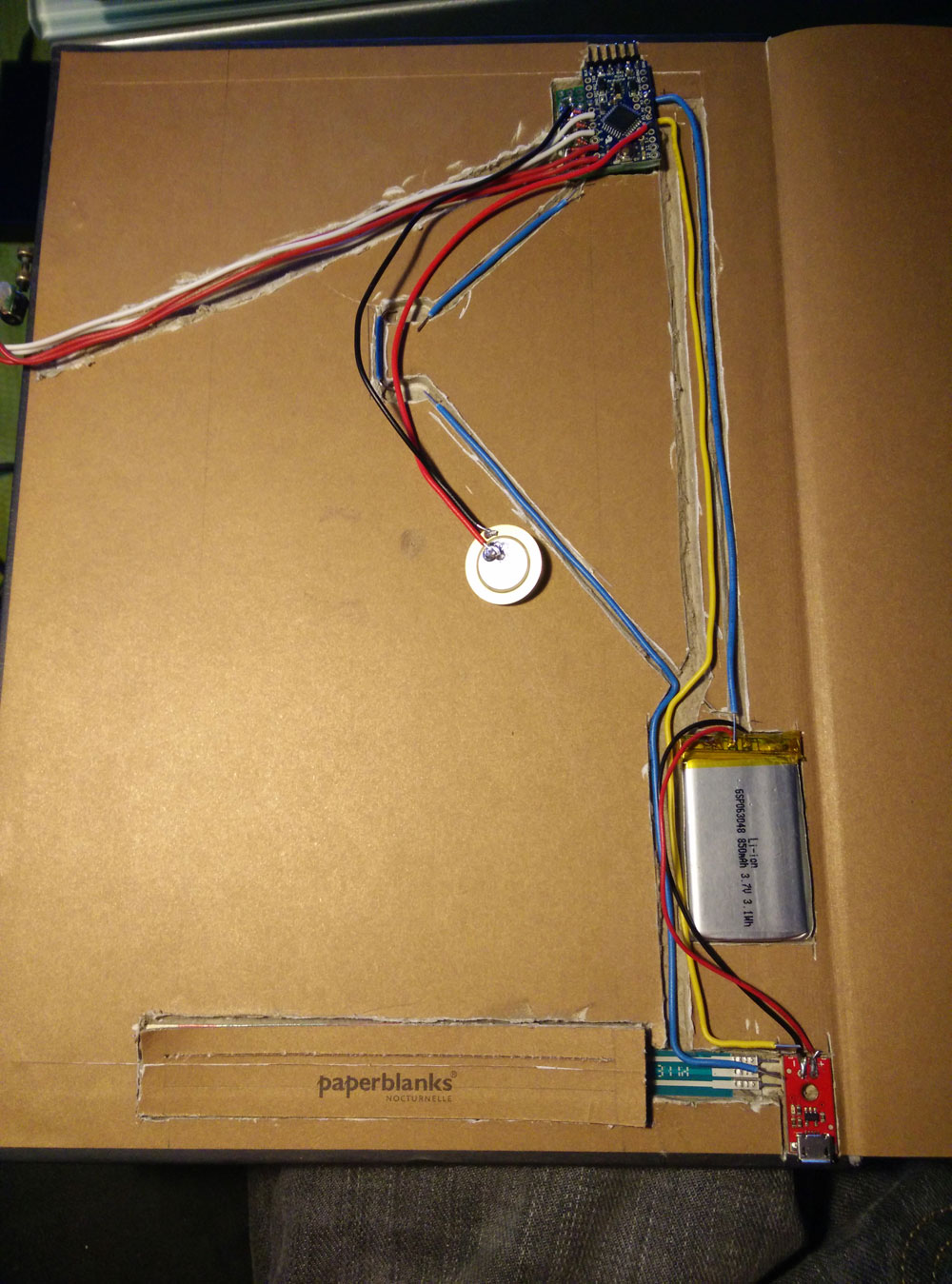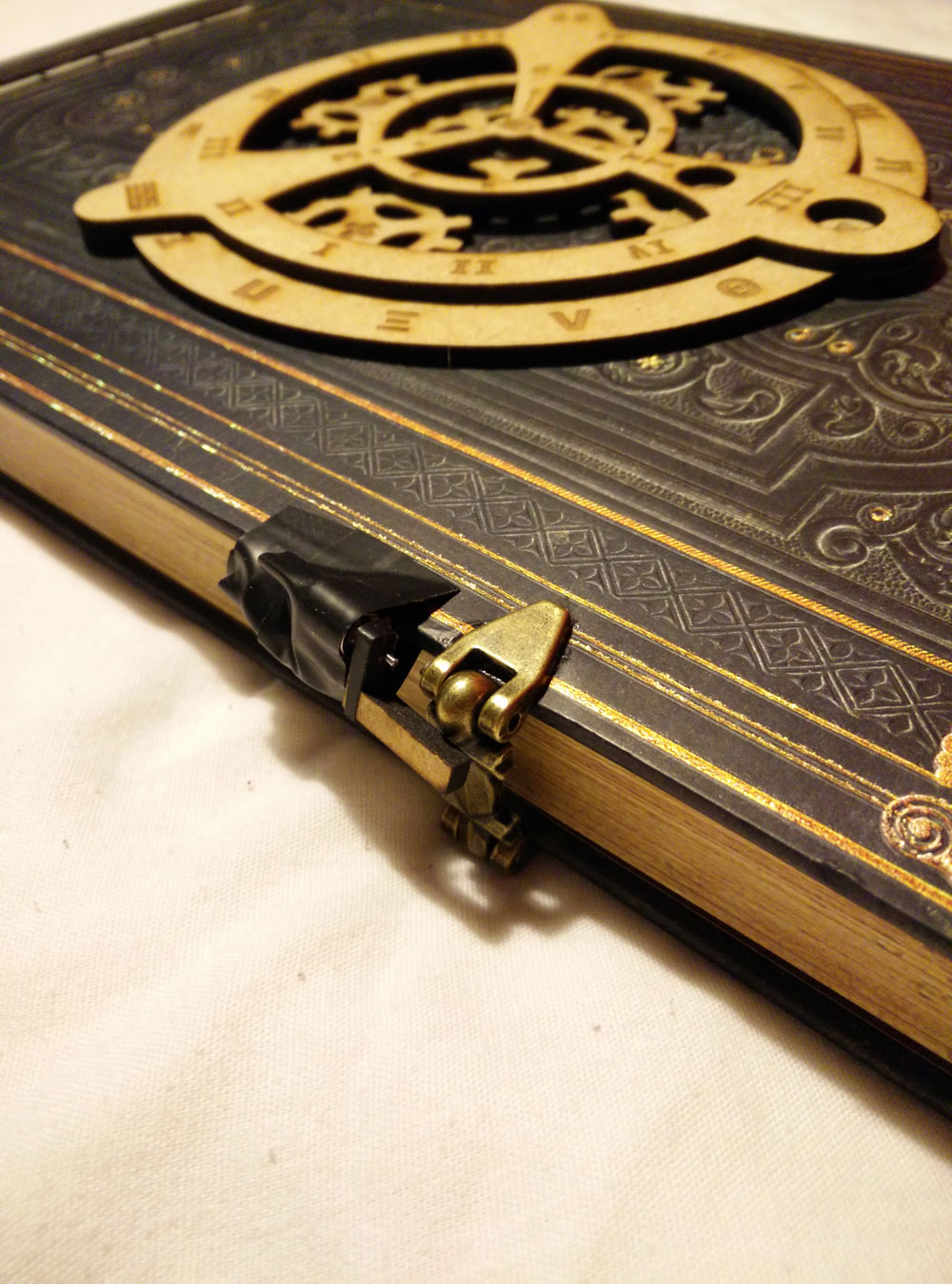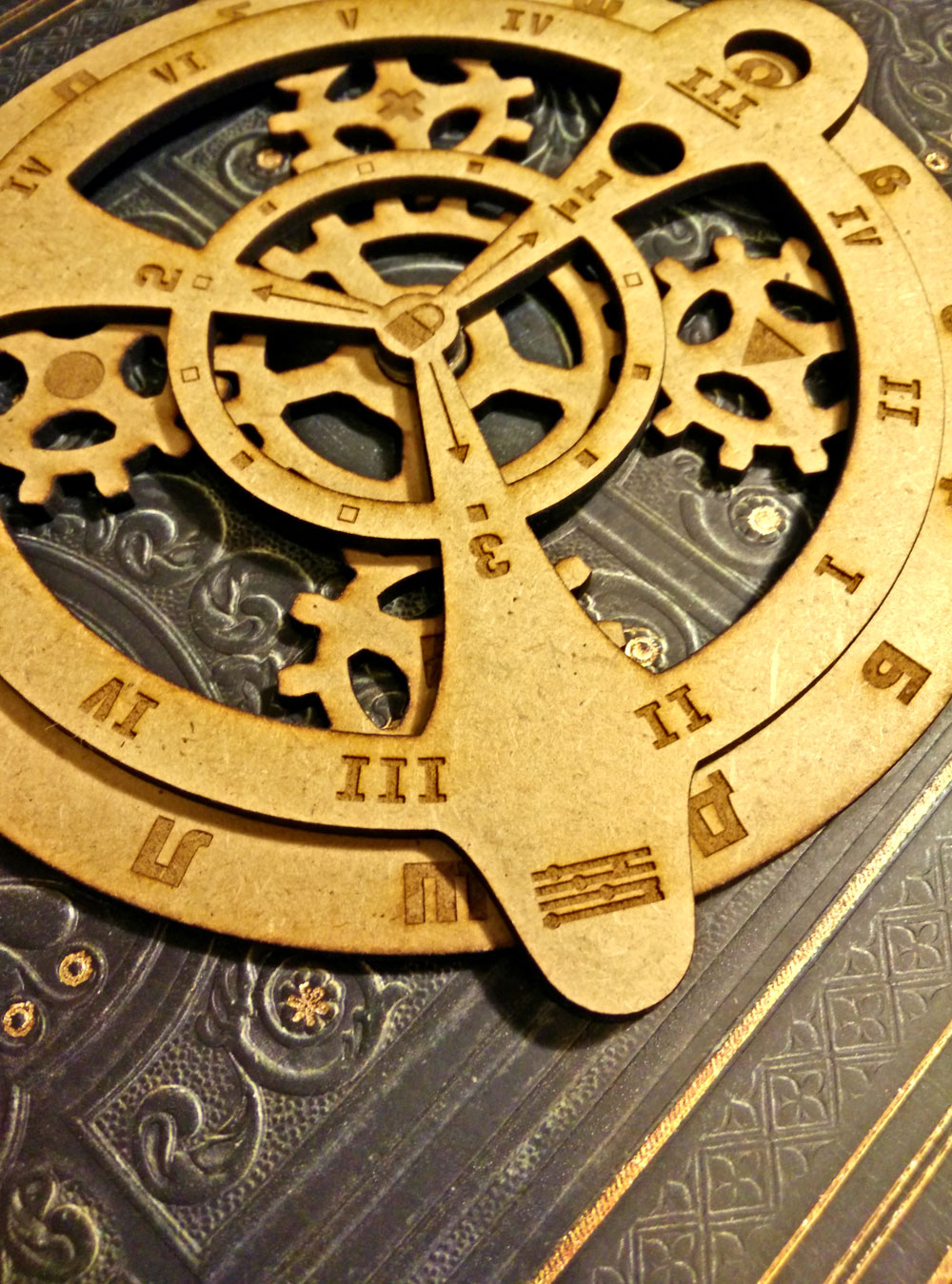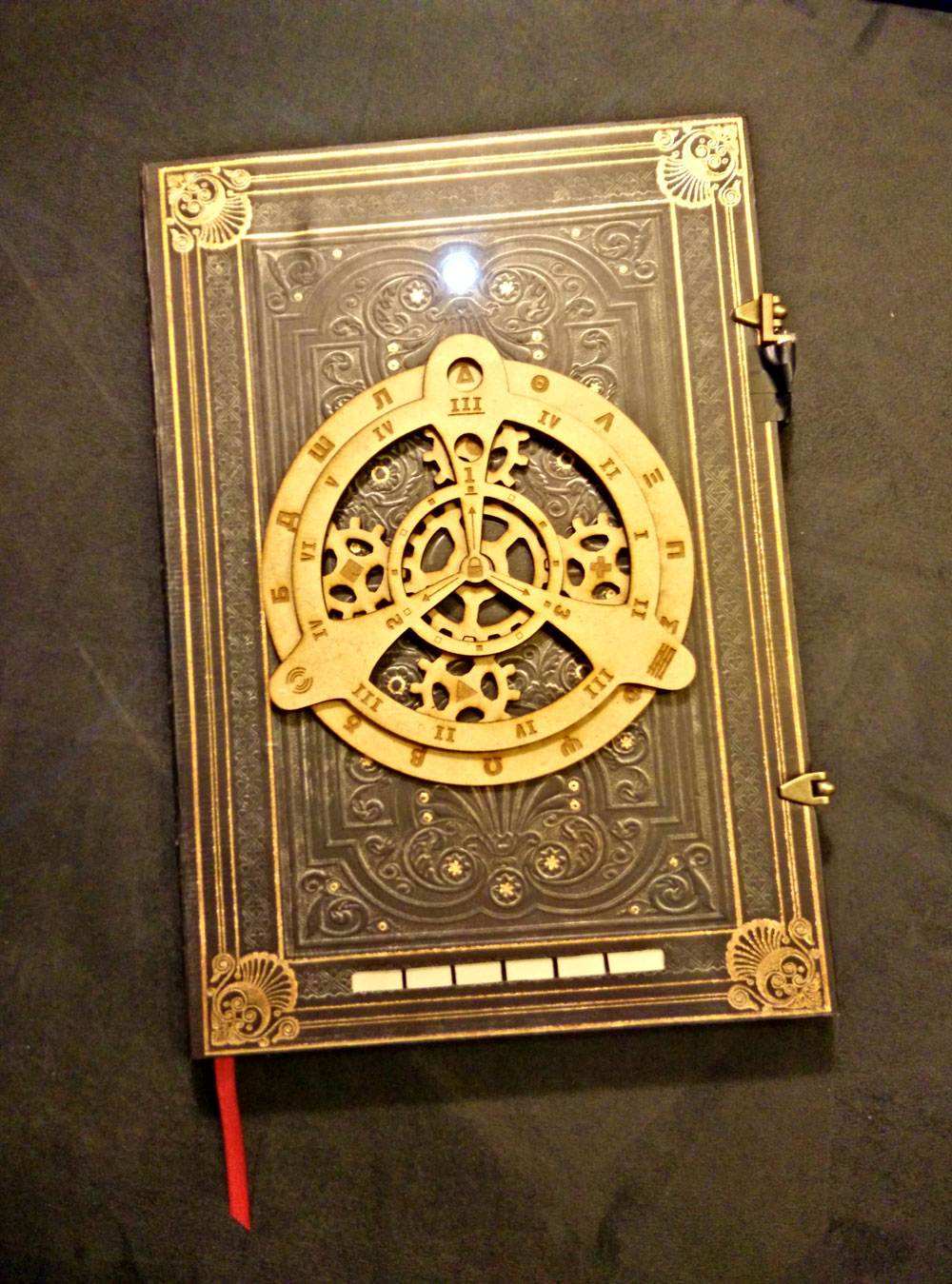For our “X Questions With” series, we’re speaking with talented individuals from around the world who have inspired us with their creativity and passion. If you have a story to tell or someone you’d like to see profiled, let us know in the comments or on Facebook or Twitter!
While browsing Instagram a few weeks ago we came across an absolutely fascinating video of one of our Nocturnelle journals. No ordinary notebook, this one had been mechanically modified to have a password-protected security system!
Check out the video:
To learn more about this project, we got in touch with François Dursus, the inventor behind this intriguing journal adaptation.
1) Please tell us a little about yourself.
My name is François. I’m 29 years old and have been living in Paris for eight years now. I came here for my last year of web development studies at the school Les Gobelins. Since then, I’ve been working as a Flash developer (the web technology used to create most games on the internet and some other websites) at Nurun. Flash technology is being slowly but surely killed off in favor of HTML5, so I will eventually have to do something else. I still haven’t found anything that I love as much as I love Flash, but I’ll see what the future has in store for me!
I discovered electronics with Arduino (an open-source electronics platform) when doing some games and installations for our annual party at Nurun Paris in 2012. You can see many of the things I made on this video:
It was incredibly fun to do and people were really happy, so we created the same thing the next year with some additions, like a giant NES controller to play a homemade game with our feet, a multi-player blind test and a photo-booth with face effects (distortion, swapping, tracking, etc.).
In my free time I’ve made quite a few (maybe too many) web projects, as well. Basically, I have a deep need to create things or I get quickly bored.
2) What inspired you to electronically password-protect your journal?
When I was young, I discovered a game called Myst and literally fell in love with its concept and universe. I then fell even more in love with its fabulous sequel, Riven. As I know a bit more about electronics now, I realised I could actually make objects with enigmas, just as I always wanted to. I could be the one to create the sorts of things that could have been in these games. So I took my first step with this book.
But I’m actually not the first one to do it. I first searched for beautiful sketchbooks for hours and discovered Paperblanks. There was no doubt that it was the perfect choice! I then searched if someone had made something similar to what I wanted to do and found this absolutely lovely Steampunk book (with a Paperblanks, also): http://www.steampunk-design.de/useite.php?Skizzenbuch.
After seeing this Grolier journal, there was no doubt left: I had to make my book! I didn’t want to just make a copy of it and already had other ideas in mind. In fact, I didn’t really like the fact that the parts were too big and visible. So I tried to do something similar from scratch, which wasn’t an easy task! Although the Steampunk’s locking system is far better than mine (mine being actually really bad…), I didn’t want to use a servo motor as even the smallest are too big. Instead, I tried using these so-called “micro steppers,” which are a deep nightmare to make turn when you know nothing, haha!
Luckily, the internet is full of incredible people and tutorials so I finally found my way and made it turn! These motors are really small, which I loved. The downside, though, is that this means their torque is really minimal, too (so they can’t move big things). In the end, I kind of gave up with the lock itself because it was definitely too complicated to miniaturise it the way I wanted with the tools and knowledge I had. I’m thinking about using a servo instead but I have another, much bigger project for now!
3) Can you give us an idea of the sort of “top-secret” journal entries that are you protecting?
Right now it doesn’t contain much other than some notes about the book itself and some locking ideas, none of which I could do without appropriate tools. It also contains some sketches about my next big project. In short, there still are many blank pages left! Hopefully I’ll fill them with time. But to be honest, I mostly bought this book to put electronics on it and have this “object” that I could play with.
4) When did you begin this project?
Actually, quite a while ago; I’d say something like six months back. But life didn’t allow me much time to work on it at that moment and the micro-stepper motor not turning discouraged me greatly. In early October I took a three-month break at my work for many reasons, one being that I wanted to do personal projects, like this one, full-time. It took me almost two of those months before actually doing things (which is really not good…), but once I started having successful results with the motor, things started to happen more quickly.
5) How long would you say this took you?
In the end I’d say I spent not much more than a week actually making it. One thing that was holding me back was the simple fact that I didn’t want to damage the book. But to “hide” the electronics I had to dig into the cover. One night, I took a cutter and just started cutting the cover – this was the point of no return. From then, I just couldn’t stop and things went really quickly. Two days later, it was almost done; I just had to rent a laser-cut machine to cut the wood wheels to finish it.
6) Why did you choose a Nocturnelle Paperblanks journal to work with?
Hours-long searches led me to find many sketchbooks, but none I really liked. They were either too cheap, not classy enough or there were no beginnings of a “locking” mechanism already in place. But then, I discovered Paperblanks journals. The covers were amazing and perfectly matched the style I was searching for. And since there were locking parts (the clasps), I stopped searching and just looked at the Paperblanks collection. After trying to decide between Equinoxe, Grolier and a few others, I went for the Nocturnelle and ordered one right away. When I received it, I was not disappointed – my eyes opened wide like a child, haha!
7) How did you learn what it takes to electronically modify your journal?
I actually studied electronics at school for two years when I was younger. But lately I have discovered how amazing the brain can be at forgetting things! Two years, and only ONE piece of knowledge was left: the Ohm’s law formula (V = I x R), which I actually don’t remember how nor why to use, so it wasn’t much help, haha. It’s crazy that I actually forgot everything else! What is current in electronics? I had no idea! And, to be honest, things are still not that clear.
But what’s amazing with the world of Arduino is that there are thousands of tutorials to teach you almost anything without having to actually understand or know all the concepts behind electricity. It helps to know those concepts, for sure, but you can do things without them. And if you have doubts, you can ask for help on a forum and someone will take the time to answer you. Without these people, my journal’s motor wouldn’t be turning and this article probably wouldn’t exist.
And for the “programmatic” part, as I have a developer background I “only” had to learn the language used by Arduino boards. Not an easy language but, same as with the electrical concepts, there are thousands of tutorials online to help when needed! Sometimes you can almost just copy/paste things into your own project.
8) Do you have any advice to share with other creative DIY-ers?
If you have an idea, just do it. Even if you think you don’t have the knowledge to do it. Even MORE so if you don’t have the knowledge, actually.
There is nothing more satisfying than doing something and thinking afterwards, “Oh god, I made it! I was convinced that I would be way too dumb to do that, but I did it!” (Yes, this what I tell myself every time, haha.) And you’ll learn plenty of things. I won’t lie, this can also be terribly frustrating when you don’t succeed, but just keep trying until it works (just as I did with that darn little motor!).
What can also help is to keep thinking about the idea until it becomes an obsession. If after several weeks or months you still think about it, then you should do it! You’ll get the necessary motivation to learn those new things and things should evolve quickly. Just keep in mind how proud you’ll be when your project is finally done, and even more proud about the new things you learned. Things you were thinking, “No way, I’ll never know how to do and understand that in my entire life!” will become simple concepts. Although, at the same time you’ll probably discover how many things you actually don’t know. It’s the case in development, at least, that the more you learn, the more you realize how much is left to learn. It is as if you are walking toward a mountain but the more you walk the more the mountain would fade away. Not always comfortable, but once you accept it, it’s really okay.
But, in the end, the key thing is simply to have fun!

